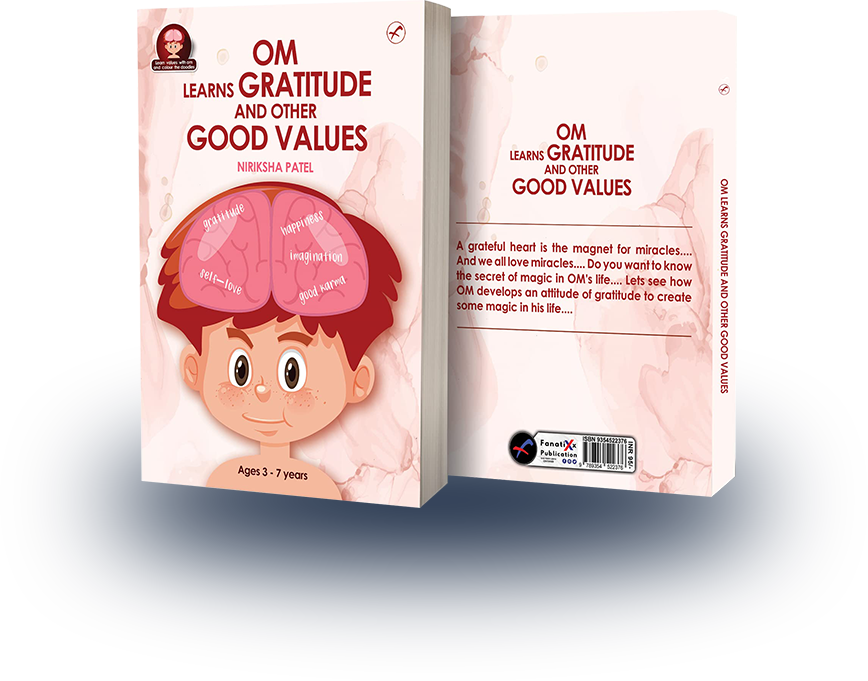The wails of a crying baby can tug at the heartstrings of even the most seasoned parents.
In this blog, I’ll unveil the secret about How to Calm a Crying Baby in 5 Seconds.
Let’s explore simple yet effective methods, and create a serene haven for your bundle of joy.
Understanding Why Babies Cry
Babies cry as their primary means of communication, expressing various needs and emotions.
According to studies, infants cry an average of two hours per day in the first two weeks, peaking around two hours and 15 minutes at six weeks.
Hunger is a common cause, with crying escalating when they’re hungry. For instance, a newborn who’s hungry might make smacking sounds or suck their fists.
Discomfort, like a wet diaper or tight clothing, also triggers tears.
Some infants cry due to fatigue, becoming increasingly fussy when they’re overtired.
On occasions, babies cry to seek comfort and reassurance.
A gentle touch or swaddling can soothe them effectively.
Understanding these cues helps parents respond promptly, fostering a stronger bond and ensuring their baby feels secure and loved.
Also, check out our blog on 20 Ways to Develop Growth Mindset and Resilience in Children
How to Calm a Crying Baby in 5 Seconds
Step 1: Check for basic needs Before attempting any calming technique, ensure the baby’s basic needs are met.
Hunger is one of the most common reasons for crying in infants. Additionally, check for a wet or soiled diaper, which can cause discomfort and fussiness.
Example: Sarah noticed her 3-month-old baby, Alex, was crying intensely. After checking, she realized Alex had a wet diaper. After changing it, Alex calmed down quickly.
Step 2: Create a soothing environment Babies feel secure when held close to their caregiver.
Experiment with different holding positions, such as the “colic carry” or the “football hold,” to find the one that works best for your baby.
Gentle swaying or rocking motions can mimic the feeling of being in the womb, providing comfort.
Example: John found that holding his baby, Emily, close to his chest while swaying side-to-side gently helped her relax and fall asleep peacefully.
Step 3: Use the power of touch Skin-to-skin contact has numerous benefits for both the baby and the parent.
Holding your baby against your chest or carrying them in a baby wrap promotes bonding and regulates the baby’s heart rate and breathing.
Example: Lisa, a new mom, practiced skin-to-skin contact with her premature baby, Jack. This helped stabilize his body temperature and reduced his crying, providing a calming effect for both mother and baby.
Step 4: Employ the “shushing” method Babies are accustomed to the constant sounds of the womb, such as the mother’s heartbeat and blood flow.
Creating similar sounds, like “shushing” or using white noise machines, can have a calming effect on infants.
Example: James found that softly “shushing” his fussy baby, Lily, replicated the comforting sounds she was used to hearing in the womb, helping her calm down quickly.
Step 5: Utilize pacifiers or sucking motion Sucking is a natural reflex in babies and can be incredibly soothing.
Pacifiers can be a useful tool for calming a crying baby and helping them self-soothe.
Example: Emma introduced a pacifier to her baby, Noah, and found that it helped him relax and fall asleep more easily.
Also check out our blog on 20 Social Emotional Activities for Preschoolers
Additional Tips for Soothing a Crying Baby
- Trying different techniques: Every baby is unique, so experiment with various calming methods to find what works best for your little one.
- Remaining calm and patient: Babies can sense their caregiver’s emotions, so staying calm helps reassure them.
- Seeking support: Enlist the help of family members or caregivers when you need a break or assistance.
- Seeking medical attention if needed: If crying persists or is accompanied by other concerning symptoms, consult your pediatrician.
Potential Red Flags
While crying is a natural way for babies to communicate their needs, certain red flags may indicate an underlying issue that requires medical attention.
Signs of Illness or Discomfort Crying:
It’s essential to be attentive to any changes in your baby’s crying patterns and look for accompanying symptoms that may indicate illness or discomfort.
Example: If your baby’s crying becomes high-pitched and inconsolable, and they exhibit signs of distress, such as pulling their legs towards their stomach, it could be a sign of colic or gastrointestinal issues.
Unusual Changes in Crying Patterns:
While babies typically cry frequently, sudden and significant changes in crying patterns can be concerning.
Example: If your previously happy and content baby suddenly becomes irritable, lethargic, and cries excessively, it might be a sign of an infection or other medical condition.
Trusting Parental Instincts:
As a parent, you have a unique connection with your baby, and your instincts play a crucial role in identifying potential red flags.
Example: If you sense something is not right with your baby’s behavior, even if there are no obvious physical symptoms, it’s essential to trust your instincts and seek medical advice.
Persistent Crying:
While some babies may cry more than others, prolonged and persistent crying could be a sign of an underlying issue.
Example: If your baby continues to cry for an extended period, even after trying the usual calming techniques and ensuring their basic needs are met, it’s time to consult a pediatrician to rule out any health concerns.
Fever and Other Symptoms:
Fever is often a clear indication of an infection or illness in babies. Additionally, watch out for other symptoms that may accompany crying.
Example: If your baby has a fever, is experiencing difficulty breathing, or shows signs of dehydration, such as reduced wet diapers or sunken fontanelles, seek immediate medical attention.
Digestive Issues
Digestive problems can cause discomfort and crying in babies, particularly if they are colicky or experiencing constipation.
Example: If your baby has frequent episodes of vomiting, diarrhea, or if they have blood in their stool, it’s crucial to have them evaluated by a healthcare professional.
Also check out our blog on How to Stop Being a Helicopter Parent: 10 Effective Ways
Positive Affirmations To Boost Your Confidence
These can help you remain calm and composed while soothing a crying baby.
- “I am a loving and nurturing parent, capable of comforting my baby with ease.”
- “I trust my instincts and know what my baby needs to feel safe and secure.”
- “I am patient and understanding, providing the love and support my baby requires.”
- “I am creating a peaceful environment for my baby to feel calm and content.”
- “I am capable of handling any challenges that arise with grace and patience.”
- “Every cry is an opportunity for me to bond with my baby and meet their needs.”
- “I embrace this moment with love, knowing that I am doing my best as a parent.”
- “My baby feels my positive energy and responds to my soothing presence.”
- “I am a source of comfort and reassurance for my baby, and they feel safe in my arms.”
- “I am grateful for this precious time with my baby, and I cherish every moment.”
Repeating these positive affirmations to yourself can help you stay centered and confident. Allowing you to provide the best care and comfort for your crying baby.
Remember, you are doing a fantastic job as a parent.
Also check out our blog on Permissive Parenting Characteristics: Examining the Advantages and Disadvantages
Visualization is a Powerful Tool to help Mothers
Here’s a visualization exercise for mothers to imagine calming your little ones:
- Find a Quiet Space: Sit or lie down in a comfortable position in a quiet and peaceful space, free from distractions.
- Take Deep Breaths: Close your eyes and take a few deep breaths to relax your body and mind. Inhale deeply through your nose, hold for a moment, and then exhale slowly through your mouth.
- Picture Your Baby: Imagine your baby in your arms, wrapped in a soft blanket, and close to your heart. Visualize their tiny face, their little fingers, and their sweet smile.
- Feel the Connection: Focus on the strong bond you share with your baby. Feel the warmth and love flowing between you as you hold them close.
- Surround with Calmness: Envision a soft and soothing light surrounding you and your baby. This gentle light represents peace and tranquility.
- Project Calmness: In your mind’s eye, see yourself exuding a sense of calmness and serenity. Picture yourself speaking softly and reassuringly to your baby.
- Embrace Positive Affirmations: Repeat positive affirmations to yourself, such as “I am a loving and patient mother,” “My baby feels safe and comforted in my arms,” and “I can soothe my baby with love and tenderness.”
- Visualize Your Baby Calming Down: Imagine your baby’s cries gradually softening and their little body relaxing in your embrace. See their eyes looking up at you with trust and contentment.
- Use Soothing Techniques: Picture yourself using the techniques you’ve learned to comfort your baby, such as gentle rocking, soft “shushing,” or skin-to-skin contact.
- Bask in the Joy: Feel the joy and satisfaction that comes from successfully calming your baby. Embrace the sense of accomplishment and connection you experience during these precious moments.
- Open Your Eyes: When you’re ready, open your eyes and carry this visualization with you as you tend to your baby. Let this positive imagery guide you in calming your little one whenever they need your loving touch.
Also check out our blog on 10 Signs of Emotionally Immature Parent & Why Its Unhealthy
Before Signing Off
As parents and caregivers, it’s natural to feel concerned when our little ones cry. Understanding their signals, we can respond promptly and learn How to Calm a Crying Baby in 5 Seconds
Also, Monitoring changes in crying patterns, trusting our parental instincts, and being attentive to accompanying symptoms are vital steps in safeguarding our baby’s health.
Remember, your instincts as a parent are valuable, and if you ever feel something is not quite right, don’t hesitate to seek medical advice.
A quick consultation with a pediatrician can offer reassurance and address any potential issues, providing the best care for your precious bundle of joy.
You might also be interested in reading our blog on Harnessing the Power of Positive Reinforcement: 10 Effective Tips for Parents
On The End Note
If you’re interested in a heartwarming and entertaining story that teaches children about positive affirmations, gratitude, and visualization, I recommend reading “Om Loves Gratitude And Other Good Values.”
This delightful book follows the journey of a young boy named Om, who uses these powerful tools to fulfill his desires in a funny and simple way.
Embracing these values from an early age can set the stage for a brighter and more fulfilling future for our children.


 How to Stop Being a Helicopter Parent: 10 Effective Ways
How to Stop Being a Helicopter Parent: 10 Effective Ways